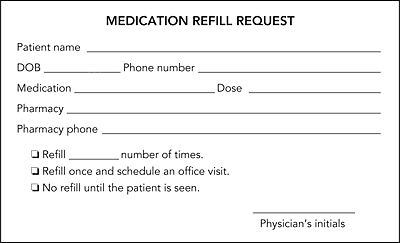
Fam Pract Manag. 2008;15(3):42
Encourage patient payments at time of visit
Train your staff to tell patients the total of your charges upon checkout and specify the amount due (for example, “Your amount due today is $80”). This approach can improve your accounts receivable because it requires the patient to refuse to pay at the time of service instead of making it easy for him or her to pay later. If he or she does ask to be billed for the amount owed, supply a printed envelope and encourage the patient to mail the payment.
Use online tools to identify drug seekers
Because of past problems with drug-seeking patients, each time our practice sees a new patient who complains of chronic pain, we consult an online database that lists all prescriptions for controlled substances filled by pharmacies in our state (see http://www.ohiopmp.gov). We search the database using the patient's name, date of birth and zip code. The results list the prescribing physician and the pharmacy that filled the patient's prescription.
Currently, 25 states have a database similar to ours, and at least nine more will be operational in 18 months or less. To find out if your state offers a database like ours, visit the Web site for your state's department of health or board of pharmacy.
Simplify refill requests

To streamline the prescription refill process, I designed a simple form that facilitates communication. When a patient calls the office to request a refill, a staff member completes the patient information portion and lists the drug name, dose and pharmacy. The form is then attached to the patient's chart for my review. I check one of the following three boxes and add detail as needed: “Refill ___ number of times,” “Refill once and schedule an office visit,” or “No refill until the patient is seen.” I then initial the form and give the chart to a staff member, who calls in the refill.